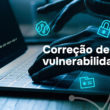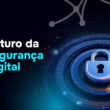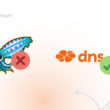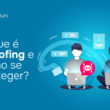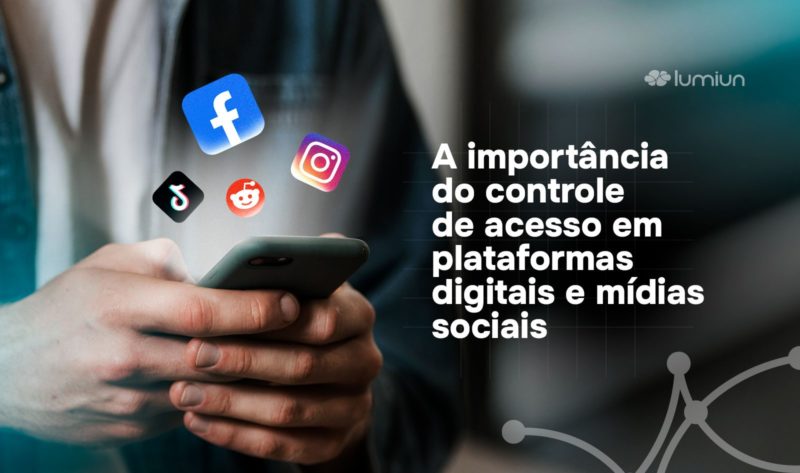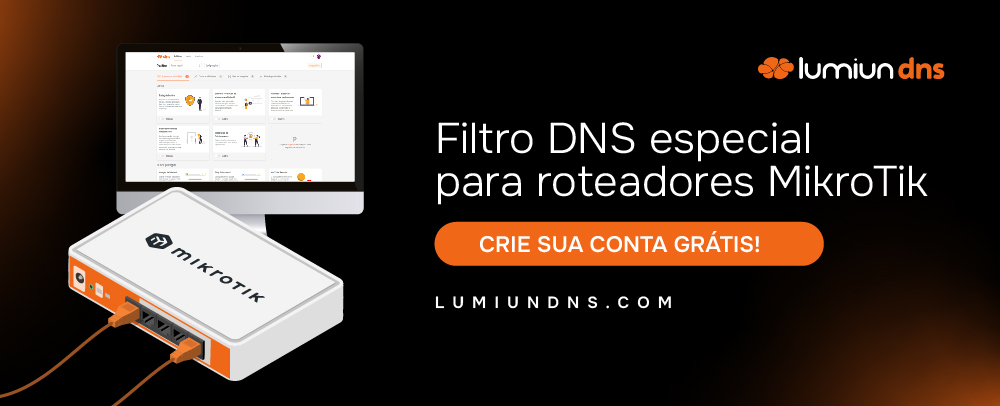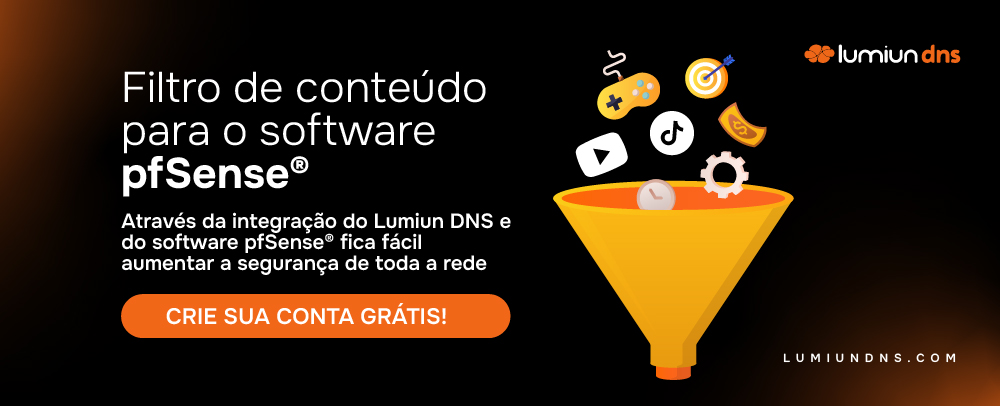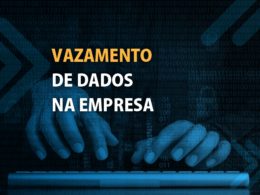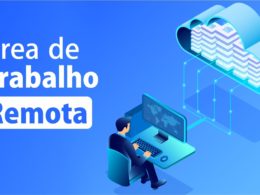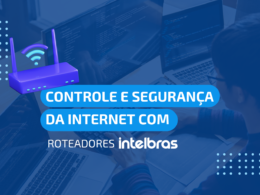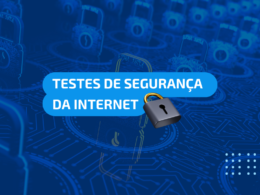Due to the exponential growth of digital platforms and social media , access control has become one of the main challenges of the modern world. According to data from the report produced in partnership by We Are Social and Meltwater in 2024, Brazil had 144.0 million social media users in January 2024, which equals 66.3% of the population. While Facebook had 111.3 million users in Brazil, Instagram had 134.6 million users. Massive online personal data sharing requires more rigorous security policies such as PNCIBER to ensure users' privacy and sensitive data protection.
However, the complexity of the digital environment imposes a huge need to find a balance between safety and usability , especially for organizations that need these platforms to maintain their activities. To help you, in this article, we will discuss the importance of access control, what are the impacts on privacy and mental health, and the technologies that are shaping this scenario .
The impact of social networks on mental health and privacy
Social networks are increasingly present in people's lives, impacting mental health and privacy, especially adolescents. However, in a recent interview, Mark Zuckerberg, CEO of Meta, F ez a matter of rejecting the idea that social networks are directly responsible for harming the mental health of young people . "Most high quality research shows that there is no large -scale causal connection between social networking and mental health problems," he said.
Zuckerberg also recalled his statement to Congress in January, where he argued that studies have not been able to prove a direct connection between social media use and mental health problems among adolescents. He admits, however, that platforms can have both negative and positive effects. "Academic research hits what I see every day about how these platforms work," he said.
In addition, Zuckerberg stressed the importance of parents in this scenario . For him, parental controls are essential, as each family has a different way of educating their children. Thus, giving parents the right tools to help manage screen time and the use of platforms is, in their view, one of the pillars for healthy coexistence with technology.
For Zuckerberg, the true villain on the impact on adolescents' mental health are not so much the applications themselves, but the constant flood of notifications and distractions. "The ability to receive push notifications and if distracted seems to be a much more relevant factor for mental health problems than many of the applications themselves," he said.
Digital platforms such as Facebook and Instagram have been widely criticized for their privacy practices , especially with regard to the use of data for advertising purposes. In this sense, there is a great movement regarding the protection of this information, bringing an intense debate about the use of this information and how they can be protected to keep users safe .
Mark Zuckerberg acknowledged that the balance between a connected experience and a safe and healthy environment is a huge challenge. Regarding this concern, he also pointed out that the company is investing in new tools to help parents more properly manage their children's time and provide constant monitoring of potentially harmful interactions. However, these initiatives cannot yet meet the breadth of the problem, and more incisive measures .
Excessive exposure on social networks, coupled with lack of control over privacy, can cause serious problems in the mental health of users. The constant comparisons and the search for validation through interactions and likes aggravate this situation. Thus, overexposure in social networks , according to studies, can lead to feelings of loneliness, inadequacy and depression.
It is therefore essential that platforms and governments adopt more rigorous access and privacy control policies, especially to protect more vulnerable users. Efficient access control is one of the most effective strategies to ensure that data is not used incorrectly, maintaining ethics and responsibility for the use of these platforms.
What is access control and why is it essential in the digital age?
Access control consists of managing and restricting access to digital information and resources, defining which users can interact in each content. This practice, carried out through specific software and tools, is critical to maintaining the safety and organization of the digital environment.
In the digital age, where all services are interconnected, the risk of data violations increases substantially. Thus, access control not only protects users from cyberataques , but also allows the adequacy and compliance with data protection laws, such as GDPR (General Data Protection Regulations) in Europe and the General Data Protection Law ( LGPD
When we refer to companies, lack of access control can cause huge financial losses and damage to reputation. Security breaches, when exploited, can expose sensitive data such as bank information, business secrets and personal communications.
Therefore, adopting more robust access control measures is critical to protecting digital assets, preserving privacy and preventing cyber threats. Companies need to be aware of this issue to avoid creating vulnerabilities in their system and constantly protecting their users.
The growing importance of online privacy
Online privacy has become one of the most debated topics in the digital age, mainly because of the increase in the use of social networks and data sharing platforms. Privacy is intrinsically related to access control, because without it, users' personal data is vulnerable to malicious and invading companies. Thus, data that has been collected by large corporations raise ethical and legal concerns about the use of this information.
In June 2021, there was a data leakage from 700 million users of the LinkedIn platform (a number that represents about 92% of its total users). Hackers put this information on sale in forums, including full names, email addresses, telephone numbers and professional details. The attack had a major impact on the platform, which had to adopt even more advanced protection resources.
The growing concern for online privacy, driven by regulations such as GDPR and LGPD , has required companies to adopt more transparent practices in the processing of personal data. Thus, the new legislations give users more power, allowing them to access, correct or exclude their data and require consent for their use. Thus, access control becomes fundamental to ensure the compliance of companies with legal rules and to protect users' privacy.
However, there are still challenges that we need to face. Lack of understanding of terms and policies leads many users to share their data without knowing the risks. In this sense, we bring the importance of a broader digital education for people to make more informed choices about the privacy of their data. Thus, online privacy is a collective responsibility, especially when it comes to employees of an organization. That is, G overnos, companies and users must work together to ensure an even safer and more private digital environment.
The risks of inefficient access control
Thus, the absence or failure to implement effective access control mechanisms exposes both users and companies to a range of risks. When exposed, hackers can use sensitive data for fraud, identity theft and corporate espionage, causing financial losses and significant reputation damage.
Companies that do not invest in effective access control are at risk of substantial data violations , resulting in heavy fines and irreparable damage to their reputation in the market. Thus, cases of data leakage , such as Cambridge Analytica , demonstrate how this type of approach can be harmful.
In this case, they improperly used the information of millions of Facebook users, which has had a great impact on the company. With information from more than 87 million people on display, Facebook's value shrank more than $ 35 billion on the stock market at the time of the incident. In addition, this has caused the company to go into the United States and the United Kingdom authorities, where CEO Mark Zuckerberg was summoned to testify in front of a legislative committee.
At the end of 2022, the Facebook -controlling company, agreed to pay $ 725 million to end a collective action started because of the leak that Cambridge Analytica suffered. Although he made the proposal for agreement, the goal did not admit irregularities in his processes.
The leak of Facebook data, of unpublished proportions, had a significant impact on the global political scenario. The information collected was used to manipulate public opinion during elections , triggering a wave of protests and undermining users' confidence on the platform. This scandal exposed the vulnerabilities of the social network and led to substantial changes in Facebook's privacy and security policies. Therefore, the implementation of a robust access control system is critical to mitigating these risks. Companies and digital platforms need to implement strict practices such as constant monitoring and multifactorial authentication to ensure that only authorized users can access sensitive data.
How to ensure safe and controlled access?
To protect unauthorized access information, it is important to establish efficient access control policies and technologies. Thus, define who accesses which data, with authentication and authorization, ensures safety and protects the company and its customers. Multifatorial authentication is essential in this process by adding an extra layer of security in all accesses. In addition to a password, the user must also provide another authentication factor , such as a code via SMS, biometrics or another strategy. In this way, invaders' access becomes much more difficult.
Thus, updating and revision of the security and access control system are also very important aspects. Digital threats are constantly evolving, and companies need to keep up with these changes to avoid the creation of vulnerability points. Regular systems of systems and monitoring of access activities help identify suspicious behaviors, allowing the company to act faster.
In addition, users' awareness of information security practices is critical to strengthening data protection. Sharing personal information indiscriminately and the use of weak passwords are examples of behaviors that can compromise the safety of the organization. Thus, it is essential that companies invest in training and education programs to make employees aware of risks and preventive measures.
Strong authentication: far beyond password
Strong authentication goes far beyond the simple creation of a complex password to protect an account. These days, the use of weak or repeated passwords on multiple platforms is one of the main reasons for successful cyber attacks. For this reason, it is increasingly important to adopt authentication methods that offer greater security .
One of the most effective ways to establish strong authentication is through the use of multifactorial authentication . This strategy requires the user to provide more than one identity test before being able to access their account or applications, and it is necessary to provide a code sent by SMS, email and even biometrics, such as facial recognition or fingerprint.
Biometrics and more space as a strong authentication solution. The advancement of technology allowed facial and iris recognition to become more affordable, offering a higher and more personalized level of security.
Definition of access profiles and permissions
The definition of access profiles and permissions is vital to ensure that system information is accessed more securely and controlled. Each user will have access only to the information necessary for their functions, an approach that is also known as the principle of the lowest privilege .
The implementation of this strategy allows the company to minimize the risks of unnecessary data exposure and also prevents the misuse of sensitive information. This means that a financial sector employee may have full access to billing information, but will not be able to access human resources data.
Creating access profiles is also a process that facilitates monitoring and auditing , as companies can more easily identify those who accessed certain information at specific times. This practice reduces the vulnerability of internal attacks, so that an malicious employee or partner will not be able to compromise the system.
Tools and technologies for effective access control
Several tools and technologies can be implemented to ensure more effective access control . The choice of the right tool depends on the needs of the organization, but all aims to protect the system against unauthorized accesses ensuring the integrity of the information.
The Identity and Access Management System (AMI) is an essential tool to ensure information security in organizations. AMI centralizes access control, monitors user activities, generating reports and automates tasks, optimizing information security.
Next generation firewalls offer an additional protection layer when blocking unauthorized access on the network. This feature inspects and filters real -time data packages, blocking invasion attempts before they reach the company's internal systems.
Another very important feature is technologies such as VPN , which are widely used to ensure that data transmitted between users and servers are encrypted , protecting data even when employees are not in the corporate environment.
Content Block and Filtering System
The content blocking and filtering system are important mechanisms for the protection of users against unwanted access and harmful information. Companies can use these systems to block access to malicious or inadequate websites, preventing phishing or malware attacks that compromise the network.
This system is useful in schools and other educational environments, allowing for inadequate content to ensure students' safety and well-being. It is possible to block content such as pornographic material, violent content, social networks and gambling to keep users focused on important activities.
It is important to mention that social media platforms are implementing filtration resources to combat hate speech, fake news and harmful content. This block is performed with the help of artificial intelligence , which quickly identifies and removes content that violates implemented policies, bringing more security to users.
Organizations that deal with sensitive data can also use filtering tools to prevent confidential information from being shared inadvertently outside the systems. This way, the company will be able to establish greater control over what enters and leaves the network, avoiding leaks and safety incidents.
Block in a click of social networks and message platforms
The possibility of blocking social networks and message platforms with a simple click have become a growing demand in the country among parents, teachers, companies and employers. In professional and academic environments, unrestricted access to these platforms can compromise the productivity and safety of users.
Parental control tools , such as those that are integrated into operating systems and browsers, allow the definition of automatic rules to block the use of social networks at certain times or activities. These solutions help to avoid distraction from users and prevent them from exposing themselves to harmful interactions in the digital environment.
In the corporate environment, companies need to use social networking blocking software, such as Lumiun DNS , and other platforms to prevent employees from wasting time with work -related activities. Lumiun Lumiun DNS allows to block categories in a personalized way, such as social networks, game platforms and entertainment websites. Constant communication by message applications also compromises the security of the company, and it is also necessary to block this feature.
One click block is a very useful functionality in emergency situations, where blocking social networks and message applications prevents the dissemination of improper information and allows attention to be focused on a task or ongoing activity. This way, this powerful tool can help control the use of digital platforms even more effectively.
Privacy Settings and Time Limits
Privacy settings and time limits are two essential aspects of efficient access control, especially when we refer to digital platforms. Customizing these privacy settings allows users to control the level of exposure of their information, from post visibility to personal data sharing.
On social networks, we can adjust who view our posts, who sends us messages and what data we share with third parties. These tools together help maintain a safe and private environment , allowing users to choose what can be shared and with whom.
Establishing time limits for using digital platforms, in turn, can be a very effective measure to manage mental health and digital well-being. Platforms like Instagram and Tiktok already offer an option to limit the daily time of use , avoiding their excessive and compulsive use.
Companies can also use these settings to limit access time to corporate systems, ensuring that sensitive data is available only during working hours, reducing the risk of improper invasions or accesses outside business hours.
The balance between safety and usability
One of the biggest challenges of access control on digital platforms is to establish a balance between safety and usability . More robust and safe systems tend to require multiple steps for authentication and permissions, this can make the user experience more tiring and complex. It is necessary to find a compromise to protect data without compromising the fluidity of use and ensure that the platforms are safe and functional.
One of the solutions that is gaining popularity in this regard is the simplification of the login process , such as the use of password authentication . This approach uses methods such as safety token and biometric authentication, reducing users' difficulty and optimizing data protection.
Education on good security practices is still crucial for users to understand the importance of adopting more robust measures such as multifactorial authentication . If users recognize the benefits of the safety layers and risks of their absence, they are more willing to follow these procedures without affecting the experience.
Considering all these factors, the key to success is to design intuitive and functional systems that ensure security to protect user information. Platforms must innovate and adjust their security strategies to ensure the protection of confidential information in the digital environment.
Thus, the key to success is to design intuitive and functional systems that ensure security to protect user information.
The challenges of access control
Access control faces a series of challenges in the digital age. One of the main problems is the growing complexity of digital systems and networks, which often include many geographically distributed users and devices. Managing access to these complex networks without creating vulnerabilities is an arduous and complex task, especially for companies dealing with large volume of data .
The rapid evolution of cyber threats is another very significant challenge. Hackers and malicious groups are constantly developing new strategies to violate security systems, requiring companies to always be a step ahead. Maintaining up -to -date access control tools is essential for this reason, but this can be time consuming and costly for the organization.
Another great challenge is the human factor . Weaknesses, lack of awareness of security and credential sharing are often the most common errors that facilitate the approaches of cybercriminals. Even with the implementation of quality tools to block this type of approach, users' behavior can compromise safety.
Benefits for companies and users on digital platforms
Implementation of more efficient access control has numerous benefits to companies and users. For companies, ensuring systems security significantly reduces the risk of data breach, avoiding financial losses and reputation damage. Customer and partners confidence is also quite reinforced when a company shows that information security is a priority.
Increased operational efficiency is another great benefit of this process. Setting access profiles and clear permissions, companies better control those who access which information, preventing misuse of data and ensuring regulatory compliance.
For users, access control ensures that information is protected against invaders and other malicious agents. This creates a safer digital environment, where it is possible to interact with the platforms without fear that the data will be exposed or used inadequately .
With access control measures in force, users are able to establish greater control over their own digital experiences , defining privacy and security preferences.
Considering all these factors, access control is an important aspect for safety and privacy on digital platforms and social networks. With more people and companies depending on these resources daily, data protection becomes increasingly important.
The implementation of more robust control policies constant education process , are essential measures to face the challenges of the digital age. The balance between safety and usability will ensure that companies and users enjoy a safe, reliable and productive .
